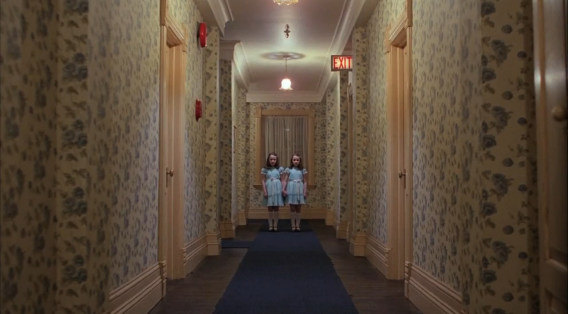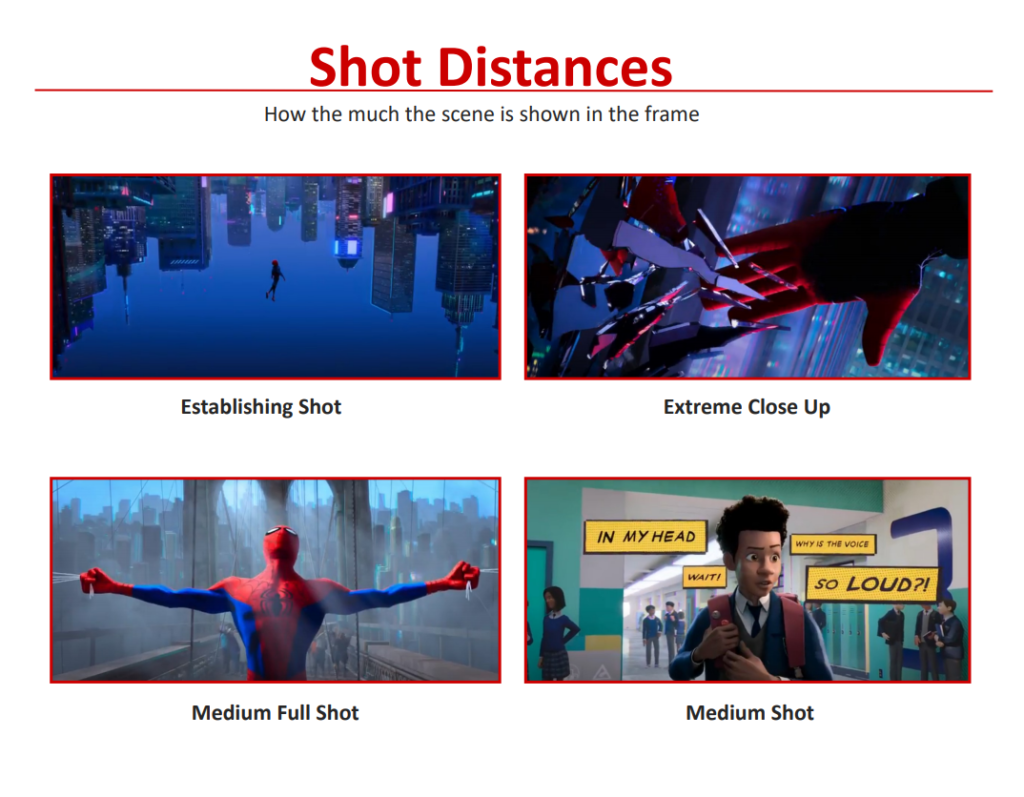| Film | Rating (0/10) | Memorable Scene | Film Element Focus |
| Dunkirk | 7 | Monologue at the end | Sound |
All posts by Lucy Pope
Filters
The Kuleshov effect

Row one: Sense of endearment
Row two: Grief and helplessness
Row three: Sympathetic
WHIPLASH FIRST RESPONSE
| Film | Preference (0/10) | Memorable Scene | Film element focus |
| Whiplash (2014) | 10/10 | Are you rushing or dragging scene | Editing |
Miller and sweep storyboard
KUBRICK CINEMATOGRAPHY – AUTEUR TRADEMARKS
One point perspective:

Kubrick frequently uses one point perspective to give a sense of unease for the viewer, due to how unnatural it is. This perspective also helps draw the audience to something in particular, in this case that something being the door. Due to this, Danny looks vulnerable, as the empty space he is in is emphasized.
Long Steadicam takes

The use of the long Steadicam take here helps build tension as Danny rides his bike around the corridors. By using this take, the audience feels like they are following Danny, but cannot protect him from what he may encounter, highlighting Danny’s vulnerability. Kubrick also uses an intra-diegetic gaze to emphasise this, as you feel closer to him and therefore closer to the danger he comes across.
Deep Focus
The use of deep focus here helps draw the audience’s attention to what is happening through the window. It helps immerse the audience into the environment, assisted by the intra-diegetic gaze he uses here.
Symmetrical Composition

Due to how unnatural symmetry is in normal life, this composition creates a sense of unease for the audience. In this shot specifically, one point perspective is also used in conjunction to emphasise how unnatural they are.
First response – the shining
| Film | Preference (0/10) | Memorable scene | Film element focus |
| The Shining (Kubrick, 1980) | 9/10 | Where Danny writes red rum on the door and the mirror reflects it as murder | Cinematography |
Cinematography – camera movement

Handheld Camera: By using the handheld camera (or by shaking the camera), this fall is exaggerated heavily, it shows his first lack of control, before removing the shake in the camera later in the fall showing he has gained control. Shaking the camera really proves to the audience how dangerous this is, and what an impact moment it is.
Dolly: The dolly is used in this scene as it can smoothly follow him as he runs across the window, creating a fluid movement. It can show the audience how much control he now has, and how fast he now moves, increasing their feeling of awe.
Slow Zoom: The slow zoom is cleverly used here to accentuate the fear shown on his face as he is hiding from the Prowler. His emphasized fear causes the audience to sympathize with him, but it also rises the tension drastically.
Pivot Shot: Lowering the camera to his hands in this shot, and following the lightning as it moves down his arms, helps the audience follow this rise in tension as he breaks free from his restraints.
Cinematography – camera angles

Overhead: This overhead shot emphasizes the height of the buildings, and how large of a moment this is for Miles. It creates a sense of fear but also excitement for the audience, which is what Miles would be feeling at the time.
Ground Level: By placing the camera at ground level when Peter gets crushed by the claws of Green Goblin, it shows defeat and how weak he is in comparison. The audience would feel fearful, and start to realize that there is a possibility he may not win.
High Angle & Low Angle: These 2 angles are swapped during this scene, one looking up at Gwen, and one at her looking down; this visual hierarchy shows the audience how skilled Gwen is in comparison to Peter and Miles, and helps introduce her alternate character as someone strong and powerful.
Eye Level: This monumental moment is captured with an eye level shot as it really emphasizes the determination and passion Miles is feeling. As eyes are one of the key ways humans show emotion, by using this shot the audience has an instant connection with how he is feeling, and they know that this is a turning point.
Cinematography – Shot distances

Establishing Shot: Shows how large the city is and how daunting his jump was, as this is arguably one of the most significant moments in his journey. By flipping the shot, it shows that he is rising, not falling, metaphorically showing how he is rising over his challenges. It fills the audience with a sense of awe and pride over his achievement.
Extreme Close Up: This extreme close up on his hands that are shattering the glass helps accentuate this monumental moment to the audience, and makes them feel the tension that Miles is feeling.
Medium Full Shot: This strength of Peter is highlighted with the MFS here, as Medium Full Shots help accentuate power and muscles, giving the audience a sense of admiration for him.
Medium Shot: The medium shot is mostly used when Miles is walking around school, as it brings him and only him closer to the camera, while everyone else is separated from him. This helps show the audience how divided he is from the rest of his school, and how he does not fit in.
Cinematography and diegesis

Cinematography: the art of photography and visual storytelling in a motion picture or TV show.
Cinematographer: the person in charge of the camera and the lighting crew.
Gaffer: Person who is in charge of the electrical department
Example of diegesis: Spirited Away

Spirited Away creates such a vivid and immersive world, especially to represent how the protagonist Chihiro moves to a new, strange world; its like the audience is transported with her. The camera nearly always follows Chihiro, so the audience only experiences what she does, so they feel like they are joining her on this journey.
Example of intra-diegesis:

Children of men use a lot of intra-deigetic gaze to put the audience in the action surrounding the protagonist. This further immerses the audience in the story and the dystopian world they have created.
Example of extra-diegesis:

Deadpool purposely breaks the 4th wall with sarcastic comments in order to create comedic effect and emphasise Deadpool’s humorous nature.
